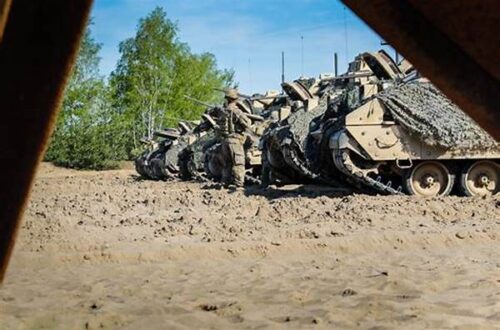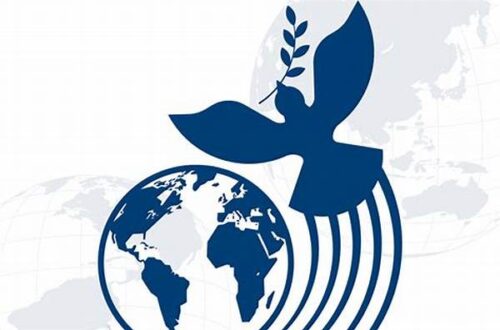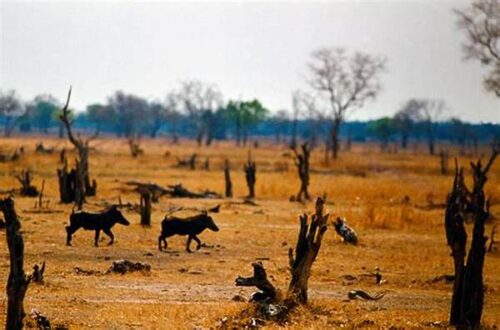In the wake of conflict, nations around the world face daunting challenges. The task of revitalizing post-conflict environments is a complex journey characterized by an array of socio-economic, political, and environmental rehabilitation efforts. Successful revitalization necessitates a multifaceted approach, involving international collaboration, resilient governance structures, and community engagement, all aimed towards rebuilding sustainable societies.
The Importance of Infrastructure in Revitalizing Post-Conflict Environments
Revitalizing post-conflict environments requires immediate attention to infrastructure restoration, forming the backbone of socioeconomic recovery. Restoring transportation networks, energy facilities, and communication systems is critical for resuscitating dormant economies and facilitating trade and investment. Furthermore, effectively reviving infrastructure helps in rebuilding citizens’ trust in government capabilities, which can be pivotal in maintaining peace and stability. Infrastructure projects also create employment opportunities, invigorating local economies and offering a fresh start for communities scarred by conflicts. Moreover, prioritizing eco-friendly and sustainable infrastructures, such as green buildings and renewable energy sources, can contribute significantly towards long-term stability and self-sufficiency. With strategic investments and international aid, infrastructure development serves as a foundational pillar in the broader context of revitalizing post-conflict environments, laying a crucial groundwork for future growth and peace.
Building Robust Institutions
Robust institutions are indispensable in revitalizing post-conflict environments, ensuring the rule of law and good governance. Establishing transparent institutions fosters trust and cooperation among citizens, creating a stable environment for economic growth. Strong institutions also mitigate corruption and promote justice, essential for maintaining peace.
Efficient institutions enhance service delivery by addressing the basic needs of the population in a post-conflict setting. Through this provision, they reinforce state legitimacy and facilitate the gradual healing of societal rifts caused by conflict.
Reform of judicial institutions is integral in revitalizing post-conflict environments, aiding reconciliation efforts. These reforms ensure fair trials and accountability, important for restoring faith in the justice system and reducing the likelihood of renewed hostilities.
Dialogue and consultation between governments and local communities are key to revitalizing post-conflict environments. Inclusive dialogue can lead to more equitable policies that reflect the needs and aspirations of affected populations, fostering a sense of ownership and participation.
Educational reform is pivotal in revitalizing post-conflict environments, equipping individuals with necessary skills and knowledge. Education empowers the youth and supports them in contributing positively to the reestablishment of societal norms and economic stability.
Socio-Cultural Healing Processes
Revitalizing post-conflict environments extends beyond physical reconstruction, necessitating attention to socio-cultural healing processes. Societal wounds left by conflicts often manifest in mistrust, trauma, and division, requiring comprehensive peacebuilding initiatives. Engaging communities in dialogue and reconciliation processes is crucial for restoring social cohesion and facilitating mutual understanding. Traditional conflict resolution methods, alongside modern approaches, can play a significant role in healing fractured communities and fostering peace.
Moreover, supporting local cultural practices and arts contributes to identity restoration and promotes national unity, vital for peace sustenance. Cultural festivals, music, and art therapy can provide cathartic experiences for individuals and communities, helping to process trauma and establish new narratives. Investing in educational programs that emphasize tolerance and coexistence is also essential. These initiatives prepare future generations to appreciate diversity and build societies resilient to the scars of conflict. Thus, socio-cultural healing is an indispensable pillar in the framework of revitalizing post-conflict environments.
Strategies for Economic Recovery
Economic recovery is a cornerstone in revitalizing post-conflict environments, as it serves as a catalyst for stability and development. Strategic measures must be enacted to reintegrate combatants into civilian life, including vocational training and employment programs. Microfinance initiatives and small business grants can empower local entrepreneurs, stimulating economic activity and generating opportunities for growth.
Furthermore, establishing favorable investment climates with reduced bureaucratic barriers can attract both domestic and international investors, driving job creation and infrastructure development. A focus on sustainable agricultural practices can rejuvenate rural areas, providing food security and contributing to economic resilience. Collaborating with international development agencies and NGOs is also essential to ensure that economic recovery efforts are aligned with broader humanitarian and development goals. Thus, through coordinated and inclusive efforts, economic recovery remains a vital component in the overarching strategy of revitalizing post-conflict environments.
Political Stability and Good Governance
In revitalizing post-conflict environments, achieving political stability and good governance is paramount. Transparent and fair elections, power-sharing arrangements, and inclusive governance systems are essential to maintain political harmony. Efforts to decentralize power can also enhance local administration and responsiveness to community needs, thus bolstering trust in governance.
Engaging civil society organizations as watchdogs promotes accountability and transparency, preventing abuses of power. Legislative reforms are needed to protect human rights, ensure freedom of expression, and strengthen democratic institutions. International support in building capacities of governmental institutions can further reinforce governance structures. Fostering an active civil society and vibrant political landscape involves all sectors of society in decision-making processes, thereby fostering widespread participation and commitment to peacebuilding objectives. Therefore, political stability and good governance form the backbone of a revitalizing post-conflict environment.
Environmental Rehabilitation
Environmental rehabilitation is a crucial aspect of revitalizing post-conflict environments, addressing ecological damage and promoting sustainable development. Conflicts often leave behind a wake of environmental degradation, aggravating natural resources depletion and biodiversity loss. Rehabilitation efforts must focus on land restoration, reforestation, and conservation of natural habitats, which are pivotal for livelihoods reliant on agriculture and natural resources.
Promoting renewable energy sources and reducing dependence on fossil fuels contribute to a healthier environment and combat climate change. Furthermore, integrating environmental education into community programs raises awareness about sustainable practices and the importance of preserving natural assets for future generations. Collaboration with international environmental organizations can provide expertise, funding, and technical support crucial for implementing successful rehabilitation projects. Environmental stewardship, thus, becomes an integral element in the comprehensive strategy for revitalizing post-conflict environments.
Summary
In summation, revitalizing post-conflict environments encompasses diverse elements, each interwoven in the complex tapestry of peacebuilding and recovery. From infrastructure reconstruction and robust institutional development to socio-cultural healing, economic recovery, political stability, and environmental rehabilitation, each domain plays an integral role in shaping sustainable, peaceful societies. Emphasizing a holistic approach, grounded in international cooperation and community-driven initiatives, ensures that revitalization efforts are inclusive, responsive, and resilient.
By fostering an environment conducive to reconciliation, development, and environmental protection, nations transitioning from conflict can aspire to realize the aspirations of their citizens. The path to revitalizing post-conflict environments, though fraught with challenges, offers remarkable opportunities for transformation, growth, and justice. It is through collective determination, strategic policies, and global partnerships that post-conflict societies can redefine their narratives, embarking on a journey towards lasting peace and prosperity for future generations.





